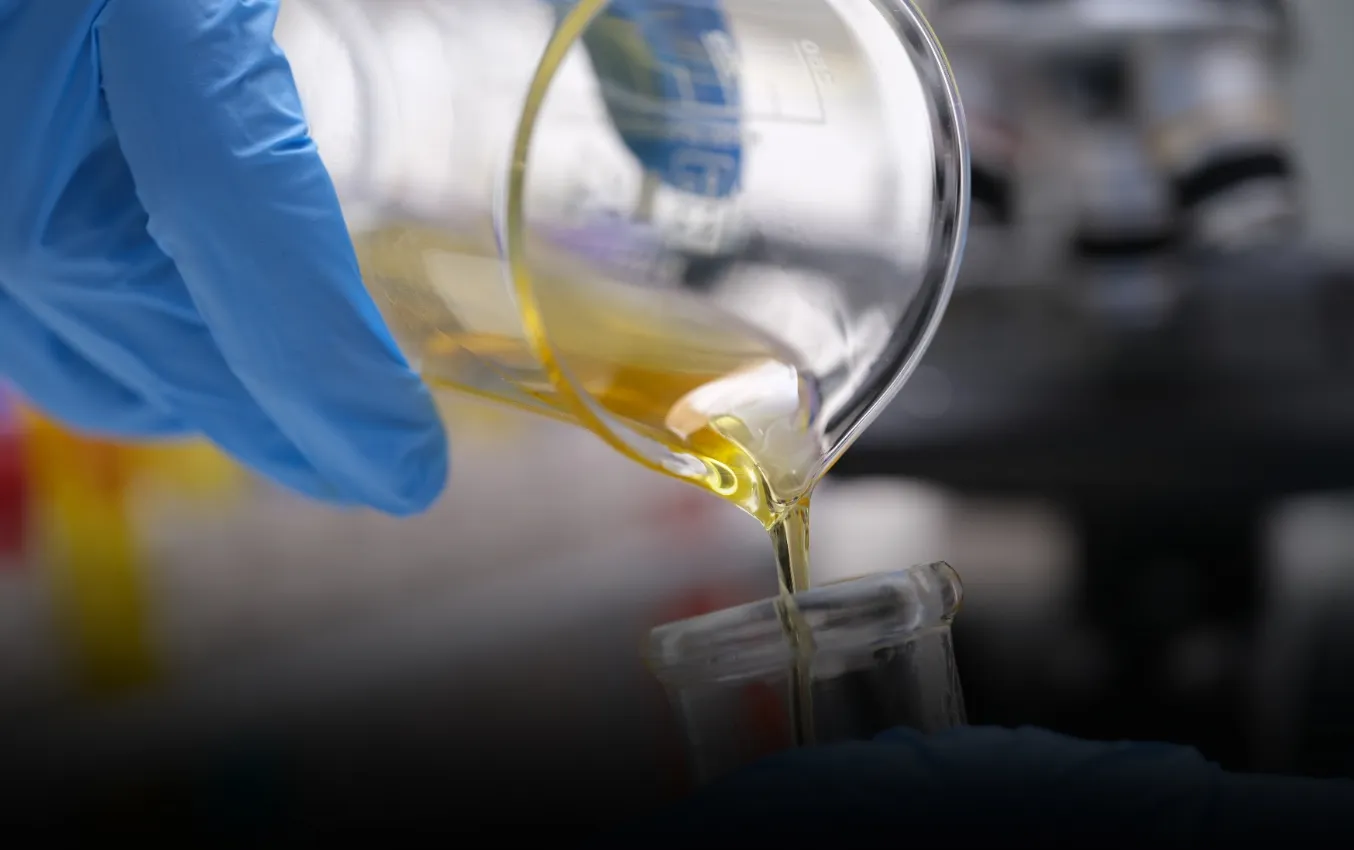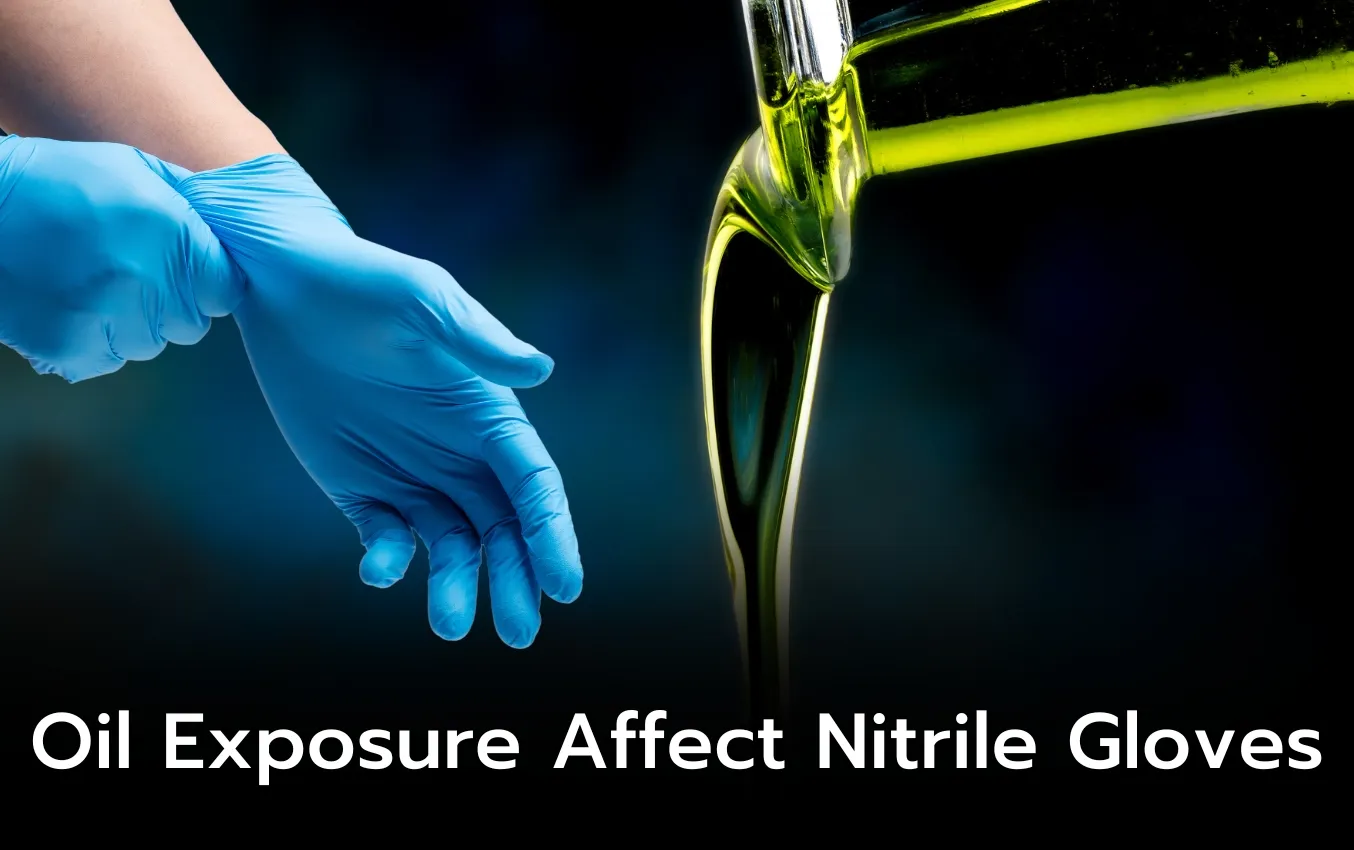As you don your nitrile gloves to tackle tasks that involve handling oils, you might wonder: what happens when these gloves come into contact with oil for an extended period? Do they remain a reliable barrier between your skin and the chemicals, or do they start to break down? The answer lies in understanding how oil exposure affects the integrity and protective qualities of nitrile gloves. In this article, we’ll explore into the research findings that reveal the impact of oil exposure on permeation rates, mechanical resistance, and ergonomic properties of nitrile gloves, so you can make informed decisions about their use and maintenance.

Permeation Rates and Breakthrough Times
The permeation rate and breakthrough time of nitrile gloves are critical factors in determining their protective performance against oil exposure. Understanding these parameters helps you evaluate the effectiveness of your gloves in various industrial applications.
Detection Breakthrough Time of Nitrile Gloves
With prolonged exposure to oil, the detection breakthrough time of nitrile gloves varies significantly depending on the type of glove. Chemically protective nitrile gloves have a detection breakthrough time of over 10 hours, while disposable nitrile gloves show a breakthrough time of approximately 0.7 hours when exposed to straight oil metalworking fluids (MWFs).
Comparison of Permeation Rates with Other Materials
Breakthrough times and permeation rates of nitrile gloves are often compared to those of other materials to assess their relative performance. The table below summarizes the permeation rates of different materials when exposed to perfluorohexane as a collection solvent:Permeation Rates Comparison
| Material | Permeation Rate (μg/cm²/min) |
|---|---|
| Nitrile | 0.13 |
| Vinyl | 1.33 |
| Chloroprene | 2.47 |
| Latex | 4.17 |
With this data, you can see that nitrile gloves have a lower permeation rate compared to other materials like vinyl, chloroprene, and latex, indicating better resistance to oil permeation. This makes nitrile gloves a popular choice for industries where oil exposure is a concern.
Temperature and Abrasion Effects
Now, let’s explore into the impact of temperature and abrasion on nitrile gloves.
| Factor | Influence on Nitrile Gloves |
|---|---|
| Higher Temperatures | Reduces protective performance, increases permeation rates, and cumulative permeation of chemicals |
| Simulated Abrasion | Significantly reduces protective performance, leading to higher permeation rates and cumulative permeation of chemicals |
Impact of Higher Temperatures on Nitrile Gloves
Any exposure to higher temperatures can alter the properties of nitrile gloves, making them more susceptible to damage.
| Temperature Range | Effect on Nitrile Gloves |
|---|---|
| 45°C | Significant reduction in protective performance, increased permeation rates, and cumulative permeation of chemicals |
Simulated Abrasion and Its Consequences
Simulated abrasion tests reveal that nitrile gloves are prone to damage when subjected to repeated wear and tear.
| Abrasion Type | Effect on Nitrile Gloves |
|---|---|
| Simulated Abrasion | Reduces protective performance, leading to higher permeation rates and cumulative permeation of chemicals |
Plus, the combination of simulated abrasion and higher temperatures can lead to an exponential decrease in the protective performance of nitrile gloves. This is crucial to consider when selecting the right gloves for your specific work environment.
Mechanical Resistance
One of the critical aspects of nitrile gloves’ performance is their mechanical resistance, which can significantly impact their overall protective qualities. When exposed to oil, the mechanical properties of nitrile gloves can be compromised, leading to tears, punctures, and abrasion.
Enhanced Resistance with Nanofillers
Resistance to oil permeation can be improved by incorporating nanofillers, such as modified bentonite, into the nitrile material. This enhancement leads to better mechanical properties, including tear, abrasion, cut, and puncture resistance.
Improved Mechanical Properties
To better understand the impact of oil exposure on nitrile gloves, it’s important to examine their mechanical properties. When exposed to oil, the gloves’ material can become more prone to tears and punctures, compromising their protective qualities.
Nanofillers play a crucial role in improving the mechanical properties of nitrile gloves. By adding these nanofillers, the material becomes more resistant to tears, abrasion, and cuts, ensuring that the gloves maintain their protective barrier even when exposed to oil. This enhancement is critical in industries where nitrile gloves are used to protect workers from hazardous substances.
Effects of Oil Exposure on Nitrile Gloves
Once again, it’s important to understand the consequences of oil exposure on nitrile gloves to ensure optimal protection and safety in various industries.
Degradation of Material
An extended exposure to oil can lead to the degradation of nitrile material, causing it to swell and eventually break down the polymer bonds. This results in a loss of elasticity, making the gloves more prone to tears and punctures.
Reduced Barrier Protection
On top of material degradation, oil exposure compromises the barrier protection of nitrile gloves. As the material degrades, the gloves’ ability to act as a barrier diminishes, reducing overall protection.
Barrier protection is critical in preventing harmful substances from penetrating the gloves. When this protection is compromised, you may be exposed to oils and other chemicals, putting your health and safety at risk.
Swelling and Fit Issues
Barrier swelling caused by oil exposure can lead to changes in fit, making the gloves uncomfortable and less effective. This improper fit can hinder dexterity and tactile sensitivity, making it harder to perform tasks efficiently.
Degradation of the material can cause the gloves to become loose or tight, affecting their overall performance. It’s important to monitor the fit and condition of your nitrile gloves regularly to ensure optimal protection.
Chemical Absorption
Chemical absorption is another consequence of oil exposure on nitrile gloves. The material may absorb some of the oil, which can alter the chemical properties of the gloves and potentially cause skin irritation or allergic reactions.
Effects of chemical absorption can be severe, especially if you have sensitive skin. It’s crucial to handle nitrile gloves with care and follow proper cleaning and maintenance procedures to minimize the risks associated with chemical absorption.
Temperature Sensitivity
Material Reaction to Temperature
| Heat Reaction | Oils can alter the thermal stability of nitrile gloves, making them more susceptible to damage from high temperatures. |
| Cold Reaction | Similarly, low temperatures can exacerbate the brittleness caused by prolonged oil exposure. |
It’s important to consider the temperature range when using nitrile gloves, especially in industries where extreme temperatures are common. Understanding how temperature affects the gloves can help you take necessary precautions to ensure optimal protection.
Discoloration
Chemical reactions caused by oil exposure can lead to discoloration of the gloves, which may indicate compromised integrity.
For instance, if you notice your nitrile gloves have become discolored or show signs of visual degradation, it may be a sign that they need to be replaced. Regular inspection and timely replacement can help mitigate the risks associated with prolonged oil exposure.
With this in mind, you now have a comprehensive understanding of how oil exposure affects nitrile gloves. From permeation rates to mechanical resistance, temperature sensitivity, and ergonomic properties, it’s clear that prolonged exposure can significantly impact the integrity and protective qualities of your gloves. By recognizing these effects, you can take proactive steps to ensure your safety and protection, such as regular inspection and timely replacement of compromised gloves.
